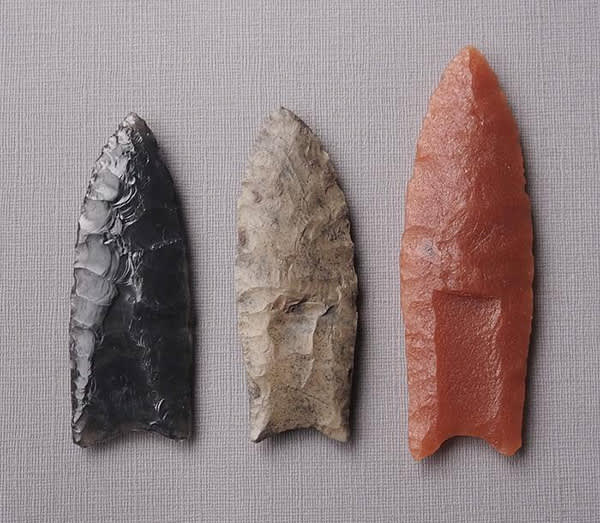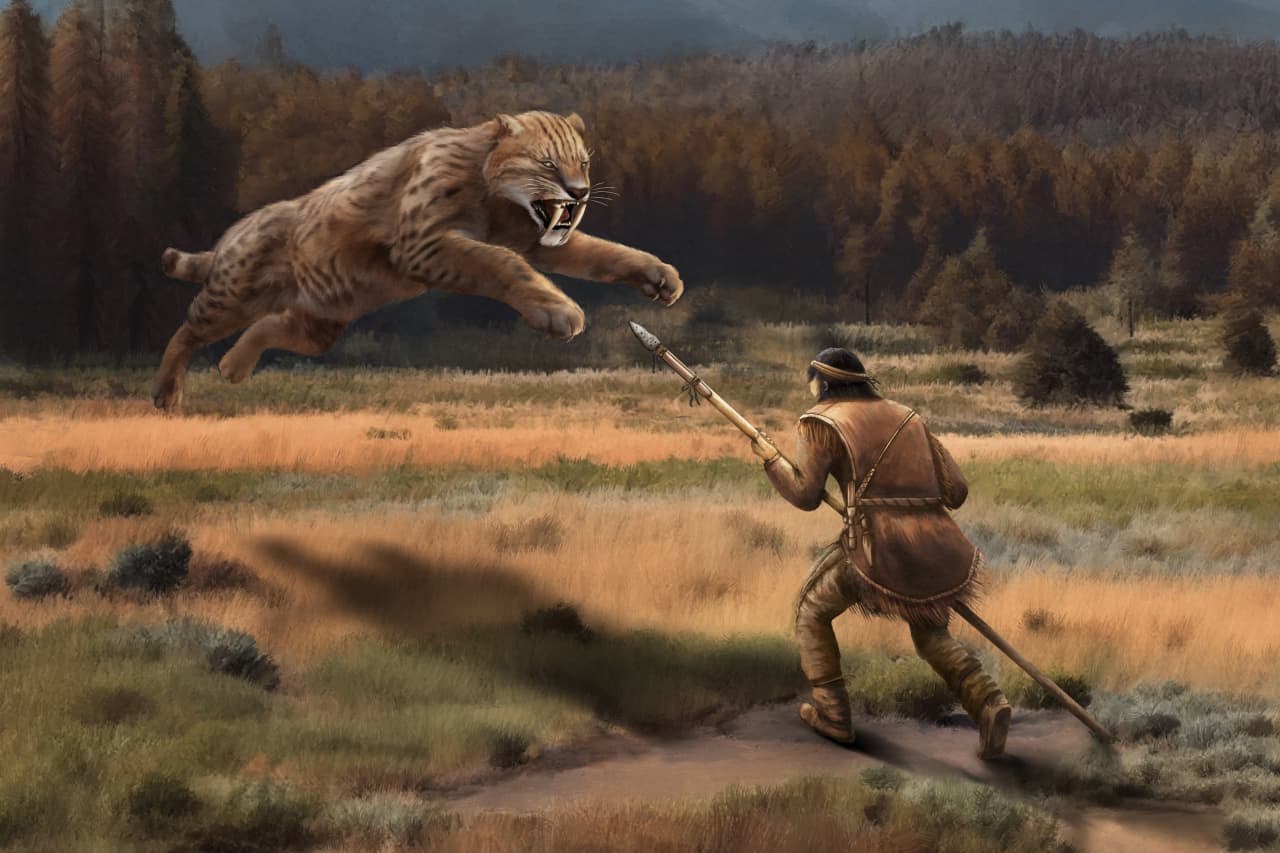Ancient hunters are often portrayed as groups of men who hurl spears and thrust weapons, using sheer strength to bring down massive creatures like woolly mammoth and mastodon.
However, recent studies are challenging the story of how people during the Ice Age in North America hunted around 12,000 to 13,000 years ago. An archaeological team proposes that these ancient inhabitants inserted long, spear-like projectiles tipped with sharp stones into the earth at an incline. This setup was designed both to pierce attacking animals and ward off predatory beasts such as saber-tooth cats.
Even the mightiest Homo sapiens hurling a spear would have felt akin to pricking an enormous mammoth with a needle. However, piercing it with a reinforced pike would deliver impact forces up to ten times greater, based on replica tests and calculations of the creature’s kinetic energy.
“There’s something irresistibly appealing about leveraging its mass against itself when it charges towards you,” stated Jun Sunseri, an archaeologist from the University of California, Berkeley, who was also a co-author of a research paper investigating these weapons. The study appeared in the journal PLOS One recently.
The preferred weapon tip from approximately 13,000 years ago in North America was what archaeologists refer to as the Clovis point—a sharp-edged stone tool with indented sides. These artifacts were initially discovered almost a century ago near the town of Clovis, New Mexico, and since then, numerous examples have been unearthed throughout the region; many reaching up to the size of a modern smartphone. Some of these points have also been found embedded within prehistoric animal bones like those of mammoths.

According to Scott Byram, a co-author of the study, shaping tools from materials such as flint, chert, or basalt is a laborious process. Therefore, it makes sense that ancient hunters would be cautious about risking damage during a hunt or losing one when an injured mammoth escapes with the tool still lodged in its skin.
Scientists haven’t discovered a complete Clovis point-mounted weapon; the probable wooden shafts that accompanied these points would have decomposed over time, leaving researchers to speculate about their usage.
However, Clovis points have frequently been found along with shorter bone shafts made from materials such as mammoth leg bones. According to the researchers behind this study, these one-foot sections of bone were likely tied onto the ends of ten-foot long spears designed to secure the tips more effectively. Their tests indicate that when the spear struck a mammoth, the bone fragment was meant to separate from the wooden shaft, enlarging the creature’s injury while protecting the Clovis point. This design allowed for the recovery and reuse of the precious tip.
This kind of tool would have enabled all ancient humans—irrespective of their age, gender, size, or physical strength—to confront even the biggest creatures from the Ice Age, as stated by Sunseri.
This might have allowed them to extend their territory for hunting purposes as well.
“If you manage not to drop your Clovis point each time you try to make a kill, you can afford to do some extra scouting and exploration,” he stated.
Send an email to Aylin Woodward at [email protected]





